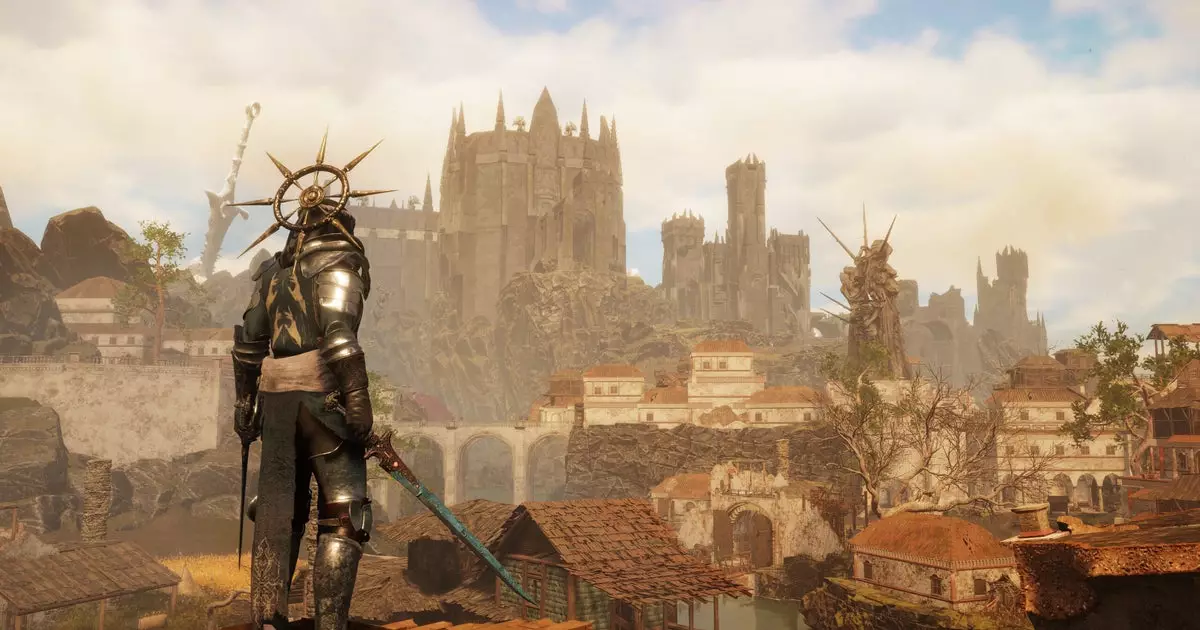In the ever-evolving landscape of open-world RPGs, the quest for a compelling narrative intertwined with engaging gameplay remains a noble pursuit. If you’ve felt disinclined towards mainstream titles like Skyrim or the newly remastered Oblivion, your adventurous spirit may find a satisfying alternative in Tainted Grail: The Fall of Avalon. The whispers buzzing through the gaming community hint that this title, transitioning out of Early Access, is making significant waves and could be the breath of fresh air that many gamers need.
The Allure of the Arthurian Mythos Reimagined
Set in a darkly reconfigured version of the Arthurian legend, The Fall of Avalon transports players to a world ravaged by strife and a relentless plague known ominously as the Red Death. This reimagining stretches 600 years post-Arthur, wherein the glorified golden age has given way to chaos and despair. Unlike the lavish beauty often portrayed in traditional renditions of these myths, this game embraces a dystopian realism that resonates with a sense of foreboding. It’s an important tonal shift that might draw in players weary of sanitized fantasy landscapes and abusive beauty influencers.
With a proposed gameplay span of 50-70 hours, packed with over 200 side quests and enticing activities like house decoration, farming, and even sketchbook journaling, Tainted Grail promises to be bursting with content. This depth compels players to engage in a myriad of experiences beyond traditional combat and quests. The intriguing concept of incorporating storytelling through art and journaling is a novel twist that could foster a deeper connection between players and the feasting, decaying world of Avalon.
The Chaotic Nature of Wyrdness
Integral to the world of Avalon is the chaotic force known as Wyrdness, a primordial chaos that exacerbates during the night’s veil, significantly ramping up the challenge for players. This overarching theme not only heightens the stakes of exploration but also draws parallels with the natural ebb and flow of day and night that many will find familiar in real life. Rather than simply providing a time of reprieve, the shadows bring forth stronger adversaries that force players to adapt swiftly, creating an engaging rhythm of tension and release in gameplay.
However, the playful confessions of Wyrdness accompanying one’s late-night snack binges are a breath of comic relief, a stark contrast to the suffering of Avalon’s people. It conveys the game’s self-awareness—an awareness that might serve players well as they navigate darker themes within. There lies an opportunity for developers to interlace moments of levity amidst overwhelming adversity, creating a unique narrative experience.
A Mosaic of Personalization and Playstyles
Tainted Grail offers a blend of class mechanics that encourages players to express themselves through an impressive array of build options. Whether you wish to charge headfirst into battle as an alchemist-berserker or lurk in the shadows as an archer, the choice is yours. This level of flexibility may feel thoroughly modern, but it’s contingent on the game’s execution.
However, the industry is rife with buzzwords like “limitless playstyles” and “morally grey” narratives that can both excite and elicit skepticism. Often, these phrases are used liberally in marketing pitches without substantial grounding in reality. The notion of a “mature” story may hint at complex themes, but there’s a risk of superficiality if not explored with genuine depth. Players, expecting transformative storytelling, are understandably cautious—no one wishes to navigate the murky waters of insipid narratives masked by buzzword-laden marketing fluff.
An Artistic Journey Through Desolation
One aspect that stands out in Tainted Grail is its stunning art direction, inspired by the theme of “everlasting autumn.” This aesthetic evokes feelings of both nostalgia and despair, echoing the various emotions one experiences when faced with an era of decay. This beautifully haunting backdrop serves not only as a canvas but as a character of its own, guiding players through Avalon’s story with poignant visuals.
Developers have a chance to explore the darker side of human nature quite creatively; with the priests conducting torturous experiments on victims in search of a cure, the narrative uncovers visceral truths about desperation and moral ambiguity. This gritty portrayal feels timely, tapping into fears and apprehensions that pervade modern life, making Tainted Grail: The Fall of Avalon an adventurous escape that resonates with real-world intricacies.
Without a doubt, Avalon beckons to the intrepid adventurers in search of a narrative-drivers alongside the kind of gameplay that allows personal freedom. As the community waits for the latest reviews and reactions, only time will tell if this game will live up to its formidable potential or drift off into the annals of forgotten titles.

